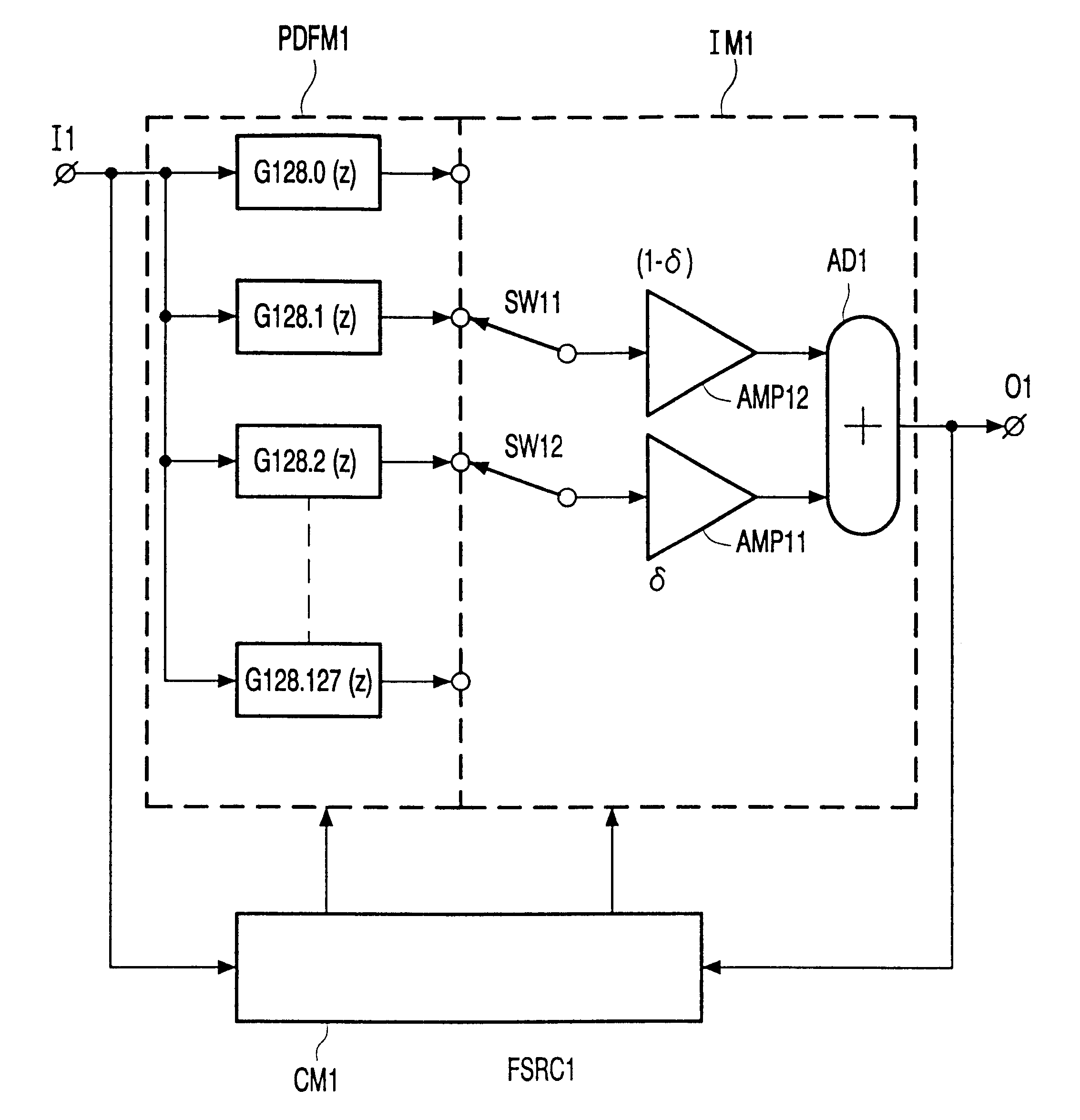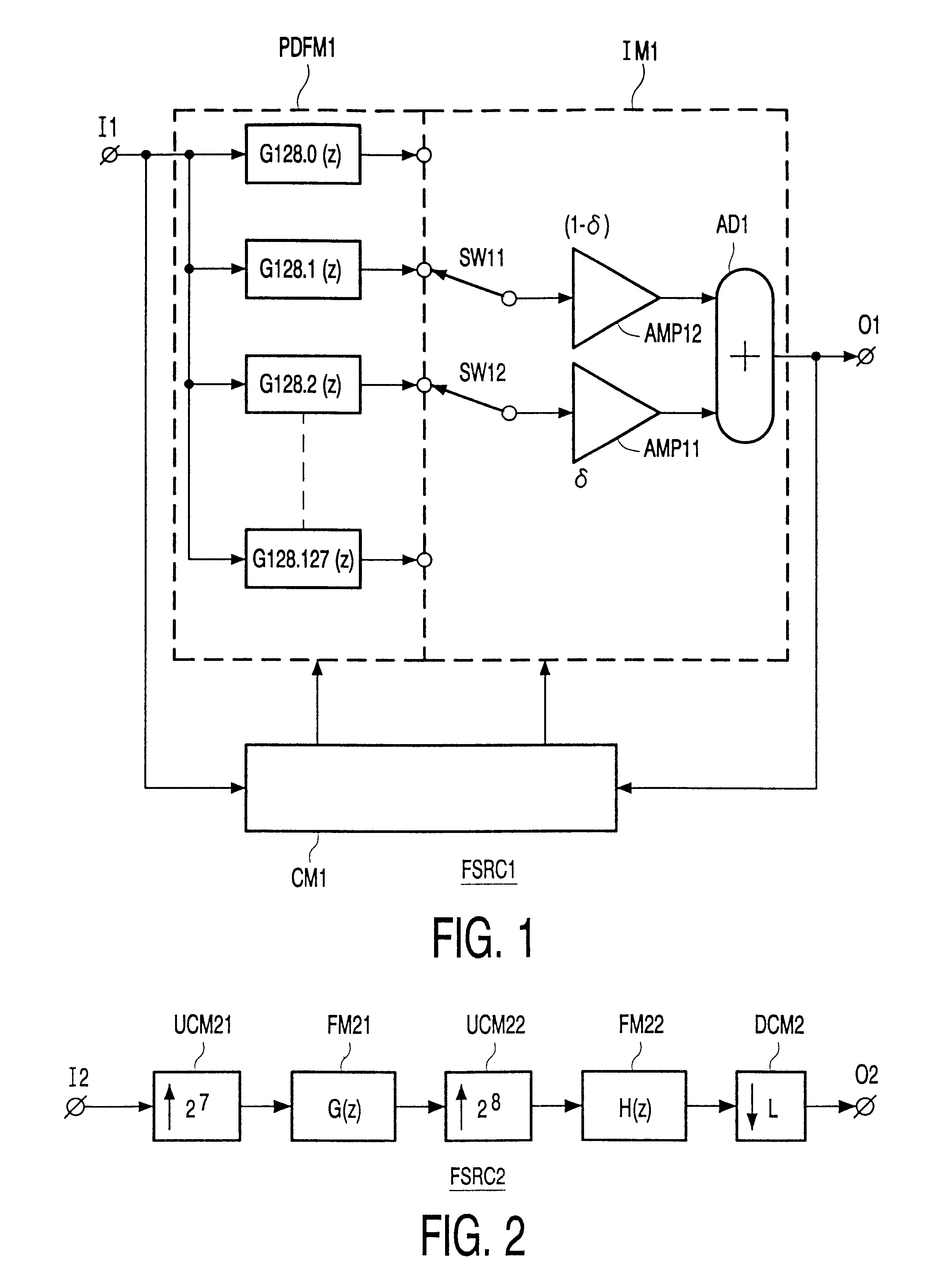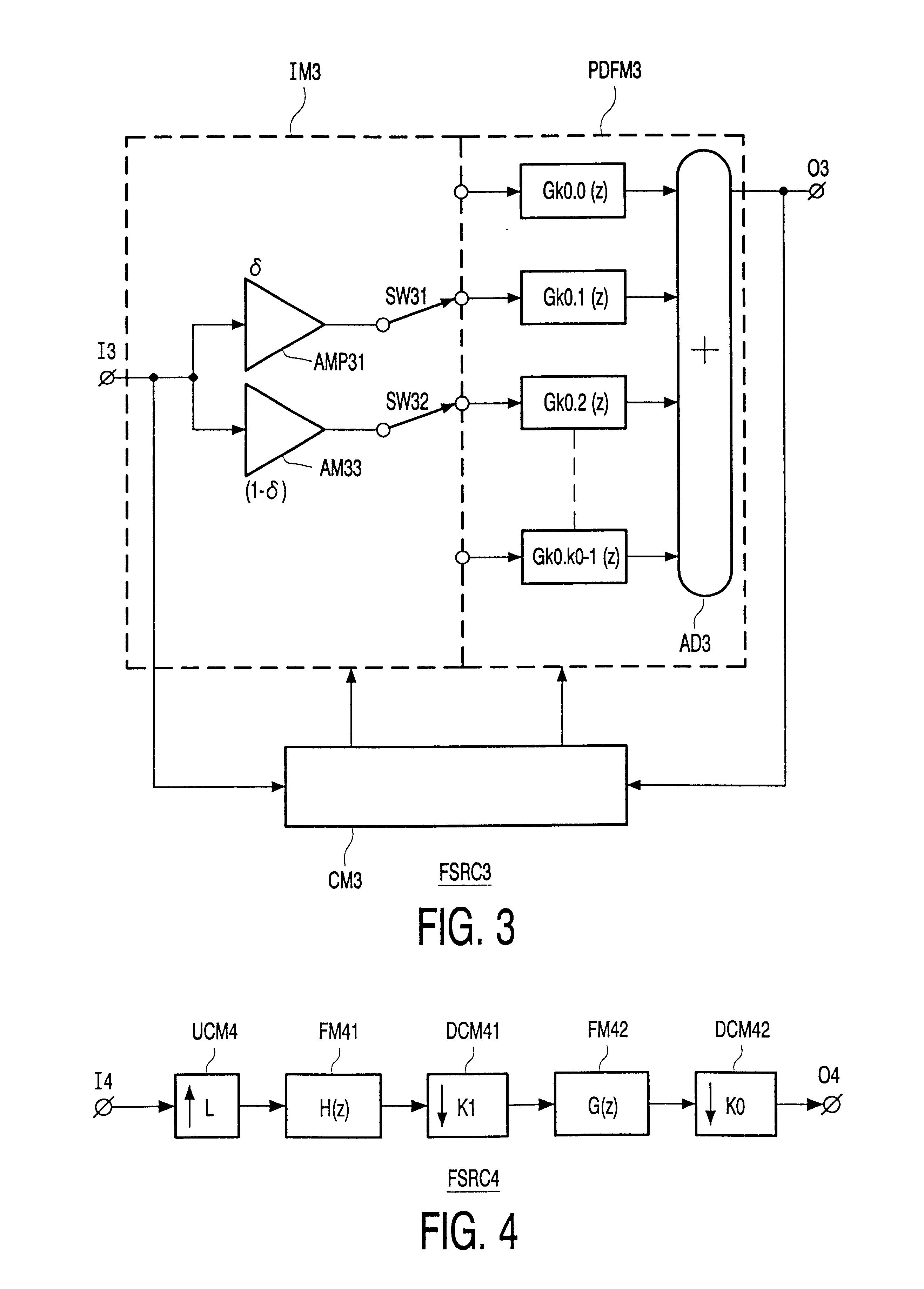Sample rate converter
a sample rate converter and sample rate technology, applied in the direction of code conversion, electrical equipment, delta modulation, etc., can solve the problem of not allowing different target frequencies to be selected, and achieve the effect of flexible and efficient sample rate converter
- Summary
- Abstract
- Description
- Claims
- Application Information
AI Technical Summary
Benefits of technology
Problems solved by technology
Method used
Image
Examples
Embodiment Construction
FIG. 1 shows a first example of a flexible sample rate converter FSRC1 embodied as an up-converter according to the invention having an input 11 and an output O1. This flexible sample rate converter comprises a series-arrangement of polyphase decomposition filter means PDFM1 and interpolation means IM1.
Further the flexible sample rate converter comprises control means CM1 that control the operation of the polyphase decomposition filter means PDFM1 and the interpolation means IM1.
In this context flexible means that the actual ratio between the input and output sampling frequencies does not have to be known in advance. Instead, the required amount of suppression of the images created in the conversion process has to be known. These images may lead to unwanted aliasing. This information and the relative bandwidth are needed to design the interpolating filters.
The polyphase decomposition filter means PDFM1 comprises in this example 128 polyphase branches (G128,0 (z)-G128,127 (z)). In th...
PUM
 Login to View More
Login to View More Abstract
Description
Claims
Application Information
 Login to View More
Login to View More - R&D
- Intellectual Property
- Life Sciences
- Materials
- Tech Scout
- Unparalleled Data Quality
- Higher Quality Content
- 60% Fewer Hallucinations
Browse by: Latest US Patents, China's latest patents, Technical Efficacy Thesaurus, Application Domain, Technology Topic, Popular Technical Reports.
© 2025 PatSnap. All rights reserved.Legal|Privacy policy|Modern Slavery Act Transparency Statement|Sitemap|About US| Contact US: help@patsnap.com



